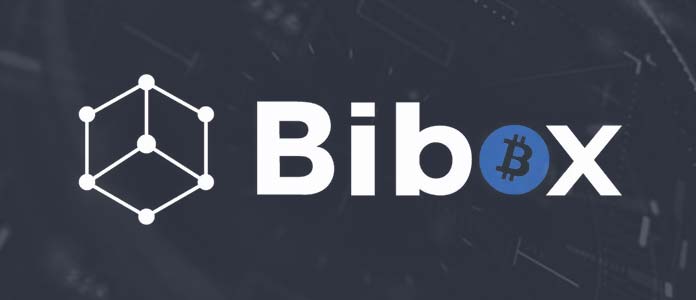Cryptocurrency Investing
Top 18 Cryptocurrency Investment Risks and Issues [Review Guide]
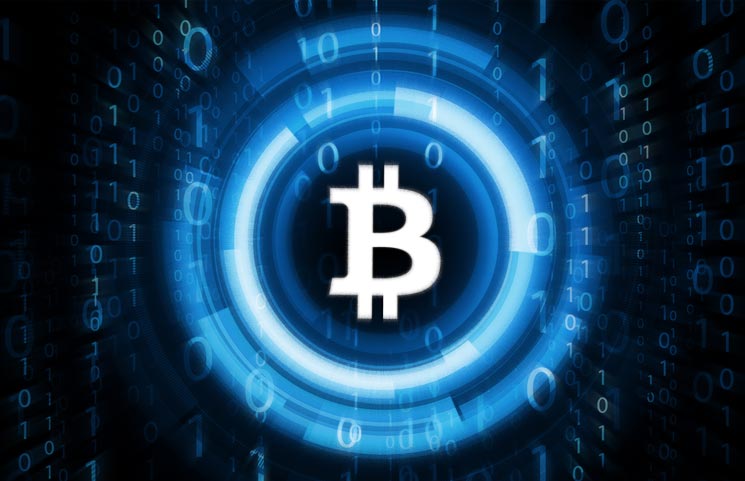
Issues & Risks With Cryptocurrency Investing
The rapidly growing popularity of cryptocurrency has resulted in the sudden influx of investors looking to also benefit from the boon. Unfortunately, many of these folks have little or no idea of the risks involved.
For many, the extent of their knowledge comes from recommendations made by friends and colleagues who encourage them to buy certain tokens. Investing in cryptocurrencies can be financially rewarding, but you should do with full knowledge of the risks involved.
This way, you won’t end up losing your shirt in the event of a bearish market –like it is presently- or investing in a poorly performing token.
Table Of Contents
We have therefore, created a comprehensive guide to cryptocurrency investment risks to help you understand just what you’re getting into when you decide to invest in cryptos.
1. Cryptocurrency Value Instability
One of the biggest risks involved in cryptocurrency trading or investing is the frequent extreme price fluctuations. At the beginning of this year for instance, bitcoin was valued at over $18,000 USD. Now, it’s fluctuating between $6,000 and $7,500.
Ethereum that was priced at over $1,600, is now fluctuating between $300 and $400 per unit. That’s how volatile cryptocurrencies can be, and why you need to adequately prepared for these wild price fluctuations.
This is a perfectly normal occurrence in the market, and requires that you be patient and courageous enough to “hodl” –short for “Hold on for Dear Life”- and just stick through the short and prolonged dips if you want to make a killing when the currencies eventually bounce back.
2. Lacking Oversight
Here’s the truth about the crypto market right now: it is still the wild wild west. Anything can and does happen here.
Everything from scam coins to pump and dump coins, token founders absconding with people’s monies, with zero penalties and so much more. All of these are possible because there’s largely zero oversight.
Sure, some countries are beginning to regulate crypto trades, but that’s a very minuscule number. The larger part of the community is completely unregulated. Anything flies here. Remember that.
3. Exchange Shutdowns
In the past, exchanges have just upped and closed down their operations, cleaned out the resident wallets on their platform and walked away without any warning to its investors and populace.
This has happened and can still happen in the future. Of course, things are becoming a little more stable and the likelihood of that happening is slimmer now.
But still, that can happen, which is why you should only trade on the more popular and reputable platforms and exchanges.
4. Abundance of Scam Coins
Less than 200 of the 1,500+ cryptocurrencies available are legit and have a valid use case. The others are tokens designed to just make a lot of money for their creators. The founders just create them for the purpose of making some money off gullible investors.
These coins are often very cheap – think less than 1 cent per token in many cases – and attractive to investors who just want to buy, hold and watch it appreciate so they can double their funds.
To reduce your risk of falling for these scam coins, just stick to the top 100-200 cryptocurrencies listed on Coinmarketcap. This is not to say there are no scam coins in the top 200 tokens, it’s just they are quite few.
5. Current and Possible Future Regulation Issues
The entre cryptocurrency market sprung up from bitcoin’s decentralized, privacy based and trustless blockchain tech. For many, this is the reason they are interested in cryptos.
But, with the cryptocurrency market cap growing phenomenally –was valued at over $750 billion at one point this year- chances are that countries and governments would be looking regulate the industry.
And as you know, regulations can influence pricing and token value, as people would be very likely to pull their funds, resulting in a price free fall and rapid market disintegration. So, keep your eye open for regulations particularly from major player countries like the US, China, and South Korea.
6. Outright Banning of Cryptocurrency Trading in Certain Countries
Certain countries like China are going after cryptocurrency traders, investors, platforms and ICOs in their countries. The government is currently targeting Chinese residents who trade overseas by scrutinizing their bank transactions and freezing their accounts.
In fact, China banned cryptocurrency exchanges in September, 2017, forcing investors and traders to do their business over the counter or offshore. Similar occurrences can happen in any country if the government deems it too risky and dangerous for its citizens to continue participating in the market.
7. Tax Implications
In the US for instance, you are expected to pay tax on your cryptocurrency profits. Proceeds from cryptocurrency trading and investments are grouped under the personal income category. So, you would have to declare it as personal income and pay taxes on it.
The law differs for every country. Check your country’s tax laws to see what your country says about it.
8. Security Risks Through Vulnerable Accounts
Cryptocurrencies are stored in wallets. These are usually grouped into
- Hot wallets
- Cold wallets
Hot Wallets
Hot wallets are usually online and easily accessible. They could be in the form of your desktop wallet, online wallet, or the wallet on your favorite cryptocurrency exchange. As long as it can be easily accessed for trades and withdrawals, these are considered hot wallets.
Cold Wallets
Cold wallets or storage involves the movement of your cryptocurrency tokens to hardware wallets ledgers like Trezor and Nano Ledger S, or an encrypted USB stick.
The hot wallets tend to be the most vulnerable to hack attacks. Hackers can either hack your computer or account or trick you to install a key logger to track your key strokes and steal your tokens.
There’s also this new trick where social media accounts bearing a similar name to the official account of token founders will ask you to send them a certain amount of tokens, and they’ll repay senders by sending them back 5x to 10x of their token amounts.
If you’ll be leaving your tokens on an exchange platform, make sure to enable 2FA and use a very strong password to access your accounts.
Bottom line, you need to institute serious security measures like using alphanumerical passwords, two factor authentication (2FA) and keeping your private keys safe.
9. Transactions May Be Traced
One of the major appeals of cryptocurrency is its privacy based and anonymous technology. Transactions can be anonymously sent and received without anyone knowing who sent what or to whom.
The problem with that though, is that not all tokens are able to do this. Many tokens have a ledger on the blockchain detailing transactions that were executed. This means the IRS can actually investigate your transactions during your tax filing to see if you sent in the right details.
So, if you’re looking to hide your transactions and do a lot more private transactions, you would have to actively seek out those cryptocurrencies.
10. Countries Creating Nation Cryptocurrency Tokens
Countries like Ecuador, Venezuela, Tunisia, China and Singapore have launched their own cryptocurrencies. Other countries like Estonia, Sweden, Russia and japan are considering the possibility of launching their own national cryptocurrency tokens too.
This implies that once these countries start adopting their cryptos, they may end up banning or limiting the exchange and trades of other cryptocurrencies, which could have significant effects on their value.
11. Invasion of Corporate Entities and Their Token Creation
In a manner similar to national cryptocurrencies, some companies have already created and launched their own tokens, while others have just started considering creating their tokens.
ICOs are clearly looking like the next popular fundraising strategy for businesses, and may quickly replace IPOs. With IPOs, there are restrictions and market regulations to deal with.
But with ICOs, there’s literally no regulation to bother with, which is why it’s looking very appealing to these companies.
12. Token Shilling, Pumping and Dumping
One of the major pitfalls to avoid in cryptocurrency investing is shill coins that are only used for pumping and dumping.
In case you don’t know what that is, pump and dump in cryptocurrency trading is the process of suddenly flooding a token with lots of buys, temporarily driving up the price, and then selling them off when the target price is reached.
This is usually done by a few individuals or organizations with a lot of cash. The only way to profit from this is to know how to spot these rising trends, buy in early and sell when the price is high. This, however, isn’t a viable investment strategy as it only works for the very short term.
13. Limitations in Currency Exchanges
There are very few crypto exchanges that list all the coins and make them available for trading. Some platforms don’t list certain tokens, which means you’ll have to go seek out some of those exchange platforms to buy or trade those tokens.
The problem with this is, some of those exchanges may have lax security, can close down at any time, and can result in a loss of funds. As much as possible, you want to stick with known exchanges with a history of bulletproof security and good reputations. This way, you know your capital or investment is safe.
14. Unequal Mining Benefits
Some cryptocurrencies award people differently than others. For instance, it isn’t unusual to find miners from one country or geographical location earning more than miners from another location.
This can generate feelings of resentment, resulting in many miners abandoning certain tokens for others. If that happens, it means there might be fewer of those tokens in circulation, it could result in less interest, depreciated value and the eventual neglect of that coin.
So, while the availability of the miners isn’t a major consideration for when investing in cryptos, you just want to make sure that it’ll still be in circulation for as long as humanly and mechanically possible.
15. Uncertainty About Market Sustainability
Let’s be honest, the cryptocurrency market is new, unstable and has no clear direction. This means that it’s a bubble that will blow up in our faces one day or a valid market that will be around for a really long time.
The bottom line is we don’t know how long this will last, even if it will. So, if you’ll be investing, do so with that thought at the back of your mind. We’d like it to be more stable and predictable, but that probably won’t happen for a while.
16. Harmful Vested Interests
As earlier stated, some companies are creating tokens as a way of generating some quick cash. There are also others who consistently pump and dump tokens.
The point is that the nonexistent regulations makes the market and tokens very vulnerable to manipulations. There are some individuals who create tokens to scam investors, and others who do so for sinister purposes.
Whatever the case, do the smart thing and always invest in well-established tokens with visible teams and a transparent operation.
17. FUD and FOMO
In cryptocurrency trading, the terms FUD and FOMO respectively stand for Fear Uncertainty and Doubt, and Fear of Missing Out. The first can be caused by rumors, negative news items, unfounded claims and so much more.
The bottom line, is this often results in panic selling, which negatively impacts the price of your tokens. The second happens when everyone suddenly starts talking about a crypto token and there’s sudden interest as well as cash flow towards the coin.
These two events have often been responsible for the collapse of many crypto tokens and loss of investor capital. The best way to stay immune to both is to research your intended token(s) properly, so that when these events start happening, you would see them for what they are and decide if you want to HODL and wait until your coin moons or dump and walk away.
18. Easy Price Manipulations By a Single Entity
Early this year, Coinmarketcap removed Korean exchanges and stopped using their data. The removal of these Korean exchanges effectively halved the price of cryptos across board, resulting in huge value losses.
Unfortunately, the market still hasn’t recovered from that event. The point is that the market is still susceptible to price manipulations by influential entities. All it takes is for some of these data pools to make a few adjustments and the market will tumble right down.
In the final analysis, you should understand that cryptocurrency investment is very high risk. It is possible to 10x your investment within a few months –like many did towards the end of last year- or lose everything in a few days.
If you are risk averse and prefer a more stable portfolio, just invest in more stable coins or projects you feel and can prove have great viability. Good luck and may your investments moon.
Cryptocurrency Investing
MetaMask: Ethereum ERC20 Token Wallet Browser Extension Beginner’s Guide
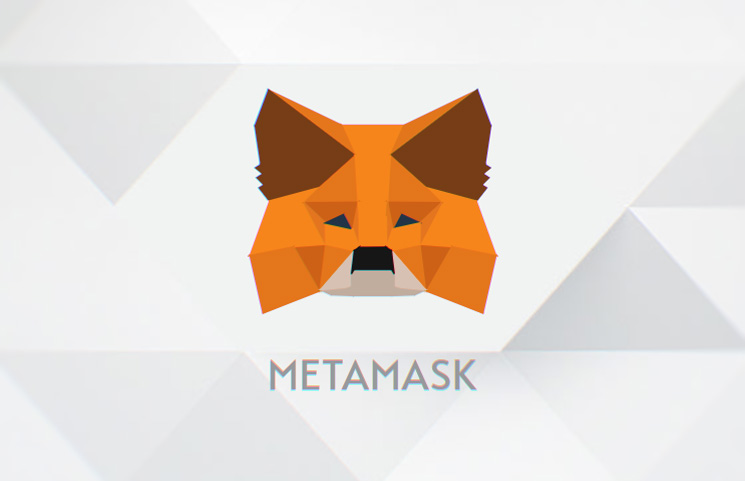
The Beginner’s Guide to MetaMask
For those new to Ethereum or perhaps even cryptocurrencies in general, the name MetaMask has probably already popped up in conversations. MetaMask is essentially a browser extension, and acts both as a wallet and access point to the Ethereum network. Explained even simpler, MetaMask is a hot wallet.
On the blockchain cryptocurrency networks, users can opt for a hot wallet (“live” or actively connected to the network) or a cold wallet (disconnected from the network). A wallet is necessary to store personal altcoins off exchanges or anywhere else after trading or transacting.
Although many early exchanges act as a bank for digital traders, current wisdom dictates that users maintain their funds offsite. In addition, a user will very often need to fund a trading account from a wallet, as many don’t allow for fiat or legacy payment protocols.
There are pros and cons to both, and current trends see most users employing the duo as their needs dictate. A hot wallet can be accessed and pilfered through phishing or user error, whereas a cold wallet is dead to the network, allowing no access at all. A cold wallet is also sometimes called a vault, as it’s silent, secure and access-restricted.
Many users will encounter the name when looking at ICOs, because ICOs are dominated by the ERC-20 token protocol. ERC-20 is a “type” of token, developed and employed on the Ethereum network, that has proven the most malleable and compatible token structure for crowdfunding purposes. The vast majority of ICOs, while employing their “own” tokens, are actually building those tokens out of the ERC-20 protocol.
MetaMask Details

Looking at a few nuances of the wallet, since it is an organic build from the Ethereum network, the MetaMask wallet will only hold ETH coins and other ERC-20 tokens of whatever origin. Bitcoin, for example, cannot be held in a MetaMask wallet.
The other major component of MetaMask is that it is a gateway to the Ethereum network. What this means is that all of the network’s dapps are available to use for MetaMask wallet holders. Dapps are “decentralized apps” and so named because their backend code is running on a decentralized network, in this case the Ethereum network.
If dapps seem obscure, examples would be the game Cryptokitties or casinos like Etheroll, a marketplace like OpenSea and of course digital exchanges like ForkDelta and IDEX.
Without a middleman like MetaMask, a PC’s browser can’t access the Ethereum network. Not unless a user runs a “full node” and installs the whole 400GB Ethereum blockchain on their PC.
The reason why MetaMask is known as a browser extension is because MetaMask injects a javascript library in your browser page. The javascript is called web3.js and written by the Ethereum development team.
Installation and Setup Of MetaMask

MetaMask is “open source,” which means anyone can view the code on GitHub. Currently, MetaMask functions on the FireFox, Chrome, Brave and Opera browsers. Links to MetaMask extensions for all relevant browsers are readily available on the MetaMask homepage. Once installed, the MetaMask logo will appear in the top right of the screen. Chrome, for one, will typically ask you to enable an extension, but these steps are all linked and users are done with a MetaMask installation in a minute or two.
Users don’t require a username when registering a MetaMask wallet, only a password. With MetaMask, a user’s password is called a “DEN.” although a clever play on words, since the logo is a fox’s face, although this appears to be more coincidence than any deliberate naming.
After creating a password, users are issued with a unique 12-word “seed phrase.” This is a bunch of words employed to safeguard a user’s account. It’s recommended that users stash their seed words in a competent password keeper like LastPass, or similar apps. Users can also generate multiple MetaMask accounts. Every account created by a user with MetaMask will share seed words and the password, but will have a different address.
Transacting With MetaMask

Paying someone or otherwise dispatching tokens from the MetaMask wallet is a simple matter. A single click on “Send” allows users to populate the subsequent screen with a user address. Send the funds and the transaction is done, and users receive a confirmation once the transaction is completed.
When interacting with dapps using MetaMask, provided a user is logged into their MetaMask account, they can access Ethereum network dapps automatically through their browser. Logging into a dapp like OpenSea, for example, the decentralized outlet for crypto collectibles, the dapp notes a user’s MetaMask address. There is no need to log into dapps separately, as the network has user intel integrated, recognizing an account holder wherever they go on the Ethereum blockchain.
MetaMask is free to use, users paying only the “gas” cost – the base cost of transacting on the Ethereum network. Gas is the fee required to effect any transaction on the Ethereum network. It is denominated in “Gwei,” one billionth of an ETH. Looking at overall UX, MetaMask is a reputable offering, with good support and a welcome absence of any dark press.
Protecting Your MetaMask Account
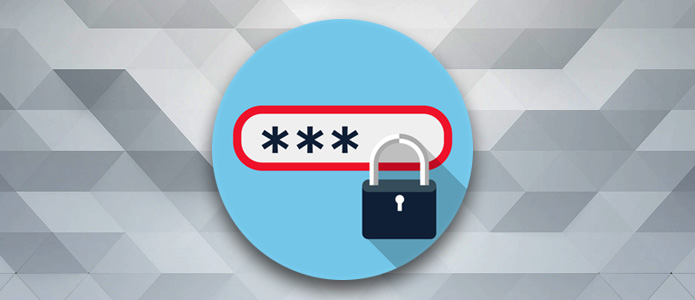
How Safe is MetaMask? In the world of cryptocurrencies, security is top of the list. Constant hacks and successful phishing attempts keep making the papers, while legislators are still battling to bring regulation up to the same level as legacy fintech. Since cryptocurrency thefts cannot be undone by identifying the thief and reclaiming funds, users should always have security uppermost in their minds when employing their MetaMask wallet.
It is advised to log out of a MetaMask account when it’s not being used. When a user is logged in, the account is considered “unlocked” and more vulnerable than when shut down. Open MetaMask accounts enable crooks to glean a user’s wallet address, token types, the wallet balance and especially transaction history.
Don’t be fooled into thinking that phishing can only happen via mail, however. Users should be aware of suspicious pop-ups or other notifications while signed into their wallet, as this can also be indicative of a phishing attempt.
Things like irregular pop-ups that ask a user to sign for a pending transactions are high risk. So too are messages telling users that their last transaction failed, then rerouting the repeat transaction to a different address. Much like cyber criminals emulate bank UIs and present with all the right logos and all the right colors in place, so too have there been instances of phony interfaces emerging.
For the best secure arrangement, users would employ a cold wallet like Ledger or Trezor Model T. For human reassurance, keeping the bulk of one’s altcoin holdings in a cold wallet can’t be beaten. That said, MetaMask has never suffered a hack nor had other instances of bad, sad press around lost funds and theft. To date, the wallet is impervious, and user losses stem from phishing attacks for which MetaMask can’t be blamed.
MetaMask Conclusion
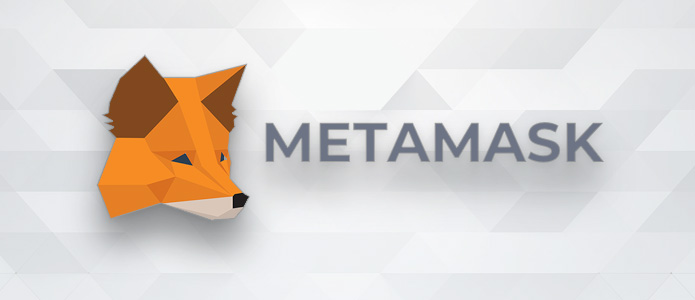
MetaMask is elegantly simple and easy to use. The wallet-stroke-network enabler has become the most popular and convenient route to navigating, paying and trading on the Ethereum network. Standing back and looking at the offer as a non-technical or, rather, non-crypto person might, as an offer it’s very simple and easy to install.
Even newcomers can quickly grasp the essence of it and get on with interacting on the Ethereum blockchain. MetaMask is intuitive and has been elegantly simplified because of its homegrown Ethereum nature. Any hot wallet, however, carries a higher risk than any cold wallet, and users should always have caution in mind when transacting via the wallet.
You can read more about MetaMask here: metamask.io
Cryptocurrency Investing
Top 6 Cryptocurrency Exchanges Using Own Coins For Reduced Fees

Best Cryptocurrency Coins Which Grant Dividend Or Reduced Fees In 2018
The cryptocurrency space has gained incredible momentum in the last few months. This is fueled especially by the existence of coins that not only earn dividends for the owners but also earn passive income while at the same time offering very low transaction fees.
Table Of Contents
6 cryptocurrency exchange coins and tokens that make money in the Crypto sphere are discussed below in detail.
KCS is a native token owned by KuCoin Cryptocurrency Exchange which is based out of Hong Kong. A total of 100 Million tokens of KCS were distributed during the KuCoin Initial Coin Offering (ICO) in 2017. KCS tokens are fundamentally ERC 20 tokens. The current value per token of KCS is US$ 4.78 and the market capitalization is approximately US$ 435 Million.
Holding KCS tokens is extremely advantageous for both Holders and traders. KuCoin Shares have a reward ratio for the holders. 10% goes to KuCoin, 50% goes to the KCS holder and 40% belongs to the referred individual. 10% of the Exchange`s profits are used in buying back the KCS and then burning the tokens. This means that KCS holders are further rewarded due to the appreciating prices.
Furthermore, Owners of KCS receive 50% reduction of the platform`s trading fees on all the volumes in the Exchange. Due to the referral system at the KuCoin Cryptocurrency Exchange, owners of KCS receive higher passive income.

Binance (BNB) Token
BNB is a native coin that is owned by Binance, which is one of the best cryptocurrency exchanges in the current Crypto market. Binance exchange was developed in China but relocated to Japan in September 2017. BNB has a current market value of US$ 11.82 and a market capitalization of US$ 1.3 Billion.
BNB is also an ERC 20 token with a fixed supply of 200 Million. During the Initial Coin Offering (ICO) in 2017, the BNB token was generated to fund the development of Binance Exchange. Owners of BNB token use it to pay for fees on the Exchange`s platform. These fees include withdrawal fees, Listing fees, Exchange fees and any other applicable fees.
Binance buys back 20% of BNB tokens in every quarter which the Exchange then burns until the total circulation reaches 100 Million. For holders of BNB, the total cost of trading at the platform is reduced by 50%. The owners of BNB also receive regular dividends when the BNB tokens are regularly burnt every quarter till the total supply goes back to 100 Million. The increased daily volumes at the Exchange further increase the benefits by providing an increased passive income.
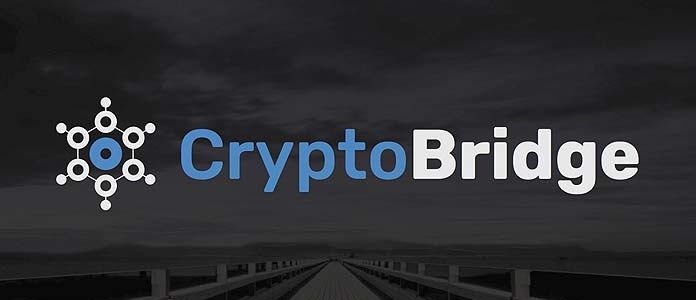
CryptoBridge (BCO) Coin
BCO is a native crypt-compatible coin created in July 2017. It is owned by the Decentralized Cryptocurrency Exchange (DEX) called CryptoBridge Dex which allows trading of most of the popular Altcoins. This Exchange utilizes the multi-signature federated gateway.
BCO coin is mineble and unlike KCS and BNB, it is not an ERC20 coin. BCO Coin has a current market value of US$ 1.64 and a market capitalization of US$ 45Million. Holders of BCO get 50% of the share bonus earnings of CryptoBridge Exchange when they stake their BCO coins.
For 3 months they receive 20% bonus, for 6 months they receive 50% bonus and for 12 months they receive 100% bonus. However, staking their coins for 1 month yields 0% bonus.
COSS Token
COSS is an ERC20 token that is owned by COSS Cryptocurrency Exchange located in Singapore. COSS exchange has matching features like Binance and KuCoin Exchanges. The Exchange is unique since it embraces plans of being a USD Exchange as well as payment processor.
The current market value of the COSS token is US$ 0.29 with a market capitalization of US$ 23 Million. The COSS Exchange retains and validates all the transactions that are initiated at the platform on the Ethereum Blockchain.
COSS has a great dividend program. The holders of the coin are paid 50% of the total earnings from the Exchange trading fees on a weekly basis. Additionally, holders can store their coins at the COSS Exchange platform or at an ERC20 enabled wallet such as MyEtherWallet.
CEFS token is another dividend earning token that is owned by the Cryptopia Exchange which is one of the most popular digital Exchanges trading numerous Altcoins. Cryptopia is headquartered in New Zealand.
CryptopiaFeesShares are very expensive and rare. The current market value is US$ 1,816 per token with a total supply of 6300 CEFS. The Cryptopia mining platform for cryptocurrencies is well streamlined and easy to use.
The holders of CEFS Token receive 4.5% of the monthly earnings from Cryptopia platform which is then distributed proportionately as per the CEFS holdings. Holding the token for longer periods leads to more returns.
Bibox (BIX) Token
BIX is a native token that is owned by the Bibox Exchange, an all enhanced-encrypted Exchange which was founded in China. It also has similar features like Binance. This exchange enables traders to trade numerous Altcoins. The exchange supports different languages like English, Chinese, Korean, Mandarin, Vietnamese and Russian. The Exchange is also unique since it has the capacity to trade cryptocurrencies while utilizing Fiat currency within the same medium.
The current market value of BIX is US$ 0.6 with a market capitalization of US$ 63M and a circulating supply of 105,918,066 BIX. The tokens are bought back and burnt regularly until the total supply reaches 271 Million.
Holders of BIX receive rewards in the form of fee reduction. BIX tokens have various uses especially in paying for the Exchange`s fees like Exchange fees, Listing fees and Withdrawal fees. The discount rates for using BIX are as follows: 50% in year one, 25% in year two, 12.5% in year three, 6.25% in year four and 0% in year five.
Our Final Thoughts
Conclusively, the best coin or token depends on the goal of an individual. For instance, an individual who is actively involved in trading is better suited to possess the BNB token while an individual whose purpose is passive income, then KCS is ideal. High volumes of the trading Exchanges will mean more dividends while the costs in trading and the referral systems will mean more passive income.
Cryptocurrency Investing
Top 5 Most Common Bitcoin & Cryptocurrency Scams in 2018

Cryptocurrencies have become a bit of hot cake. On one hand, lots of people are getting in and making a lot of money. Others are getting burned and losing their life savings in a bid to play in the markets and make a killing.
Most of those who do often invest in cryptos known as scam coins. These cryptocurrencies are designed to rip off people, and solely benefit their creators.
But because most newbies have no idea of how to identify the real moneymakers from the scams, many get burned, losing a lot of money in the process. This article is contains information on the more common cryptocurrency scams, show you how to identify them, and more importantly, teach you how to protect yourself, so you don’t get ripped off.
Types Of Cryptocurrency Scams
1. Cloud Mining Pools

Please understand that there are some legitimate cloud mining services out there. So, not all of them are bad. That said, this is one of the more common ways people lose their money.
These companies attract people who want to go into cryptocurrency mining, but have neither the time nor the money to buy and maintain their own cryptocurrency miners. So, these companies offer to help them mine, in exchange for a fee and a promise of the profits.
To identify the legit operations from the fraudulent ones, look for their registrants, company team lead and location. A major red flag is if you cannot find direct details when you do a whois lookup of their domain name.
But that alone isn’t enough. Look for transparency in terms of who runs what. Legitimate cloud mining services will have either their whois details available and/or information on the team managing the service.
Also be wary of companies registered in the US or UK, but with all team members resident abroad. If you cannot find a local address that’s verifiable, you might want to keep your money as that’s another red flag.
2. MLM Cryptocurrency Organizations

These are popping up all over the place and promising to make people instant millionaires. All participants have to do is get more people on board to invest in a specific cryptocurrency or a proxy project and they’ll profit from it.
The reality is that while there are legit multilevel marketing schemes, many of these crypto based MLM programs have no tangible product or service to sell. If the only thing they’re selling is a pyramid scheme, run and don’t look back.
3. Bogus Initial Coin Offerings (ICOs)

More and more people are realizing that they can make a lot of money from initial coin offerings. These people are taking advantage of the unregulated nature of the crypto space and the ease of creating tokens to launch ICOs.
In fact, it is estimated that over $1 billion has been invested in ICOs in the last 6-12 months, with many being unrealistic or downright fraudulent.
Unfortunately, many of these scammers are becoming more savvy and cleaning up their act by presenting a legitimate front –often with roadmaps, white papers, detailed information about their “projects” and other trappings that make their campaigns look legit. So, while it’s getting more difficult to spot the fake ICOs, it’s not impossible.
For starters, research thee company itself. If it’s been in business and has a good reputation, then you have a winner. If it’s new, has no reputation, and isn’t transparent about its processes, team or location, close that tab and keep looking.
Also, look at their management team and research them. Always go for those with well known and reputable team members. And if their promise or project sounds too good to be true, chances are it is.
4. Crypto Investment Packages

These are primarily bitcoin based and more formally known as bitcoin investment packages (BIPs). These are similar to cloud mining in the sense that they promise daily returns which are usually smaller percentages of your investment.
They often start out well to gain your trust, and then one day, disappear. This is another pyramid scheme designed to fleece you of your hard earned money. Users tend to fall for it by reinvesting their funds only to have their returns and payments gradually slow down and stop coming in altogether.
For these packages, we’ll say just walk away completely. And if you want to do this, just understand that it’s a short term Ponzi scheme and go in with your eyes open. For best results, get in at the very early stage, make your money, and cash out.
5. Pump and Dumps

These are projects created by individuals or consortium's for the sole purpose of driving the price wall up, and then cashing out once it reaches a predetermined price.
When you see cryptocurrency prices going up for no reason whatsoever, know that it’s a pump and dump in the making. If you want to partake, just make sure to get in early, enjoy the ride and cash out quickly. However, we don’t recommend investing in schemes like this at all.
There are communities that are solely dedicated to this. The go in and buy huge quantities of a certain cryptocurrency, watch the price artificially inflated and others get on board, then dump the coins after making a lot of money.
How To Protect Yourself From These Cryptocurrency Scams

There’s one simple thing to look for, and that is the use of cryptocurrency. Always lookout for the following when looking to invest in a cryptocurrency:
- An active community
- A development team dedicated to the project
- Transparency from the company
- Valid viable use case that solves actual problems
- History
Always research a cryptocurrency before investing in it. A simple search string like “[intended cryptocurrency] daily reddit” will be enough to show if they are legit or not. Also look for mentions in major news outlets, visible team leads with a track record of results in and/or outside the industry and backers.




